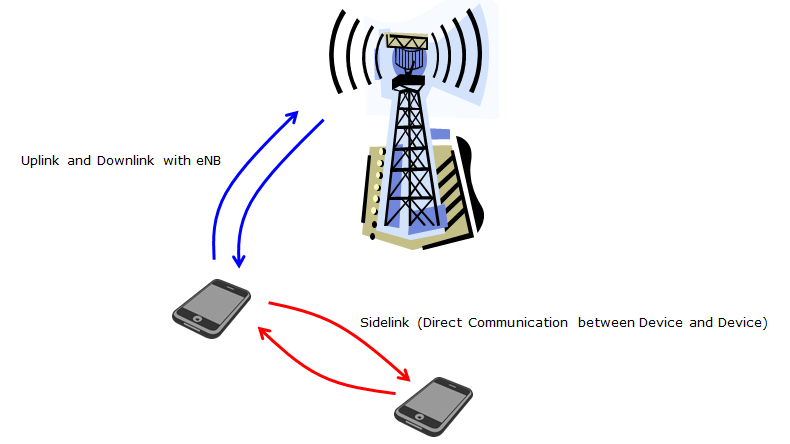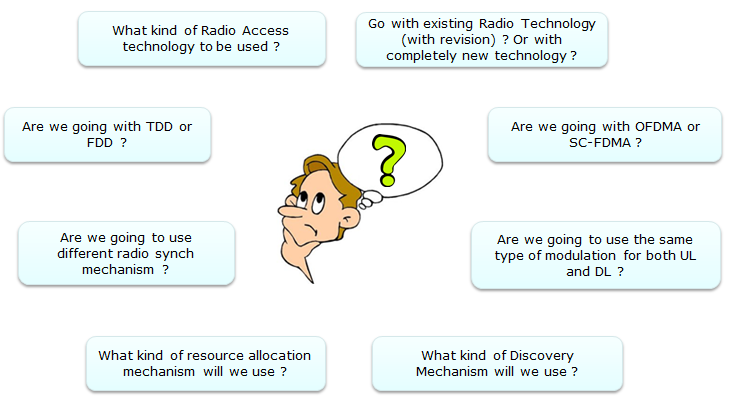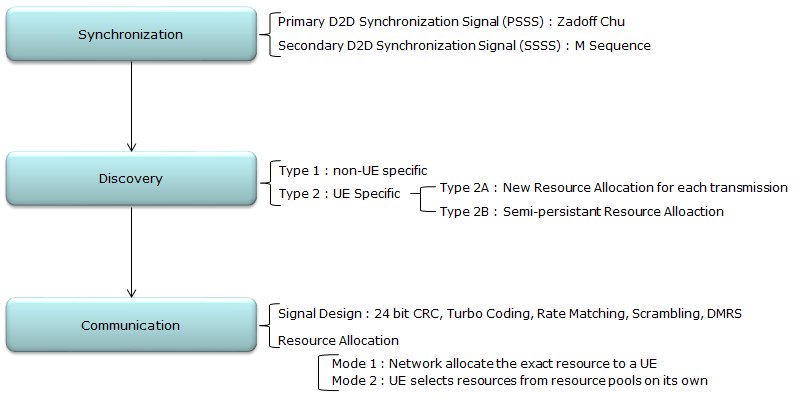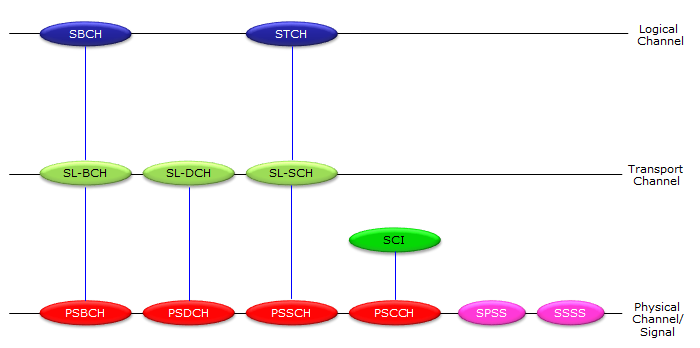|
4G/LTE |
||||||||||
|
D2D Radio Protocol
Before 3GPP Release 12.5, there were no specific document about Radio Stack of D2D, but at 36.211 v12.5 and new chapter (Chapter 9 Sidelink) is introduced. This is about D2D physical later and I think we see the corresponding change/additions in MAC layer (36.213) as well.
What is Sidelink ?
Sidelink is the special kind of communication mechanism between device and device without going through eNB. It means that it requires new physical layer design. But to minimize the design changes of existing implementation, the new physical layer is designed not to differ too much. We will use very similar waveform based on SC-FDMA in both direction.
Questions
Nothing is firmly defined in 3GPP yet about the D2D Radio Stack yet, meaning there is no TS specification yet. But there is some TR (Technical Report) level document start being published. If you want to learn anything without being too much pressure, it would be always good idea to following the specification or technical support from very early stage. => This section was first written before 36.211 v12.5 is released. Now with this specification, you would find answers to most of the questions from the specification. But I still want to keep this section as it is because it is always helpful to have questions before you study any new things.
Before start reading any formal document, let's think ourselves regarding any possible issues on desining a D2D radio stack. You can ask anything to yourself and it would be much easier for you to understand formal document if you have some kind of questions in your mind.
Following is some of the questions that are poping up in my mind when it comes to D2D radio design.
I don't have the answers to all of the these questions in full details, but at least I could find some possible answers. Take this as a kind of some likely answer with a little bit high probability. A lot of details are still at the stage of study/investigation.
What kind of Radio Access Technology to be used ? Go with the exisiting technlogy or completely new technology ? : It would not be the exactly same implementation, but at least it will be based on the current LTE Radio Access Technology with modification/optimization to the D2D concept.
Are we going with TDD or FDD ? : It is highly likely to go with TDD. (So even in FDD device for normal LTE, we might need to implement D2D radio in TDD mode)
Are we going with OFDMA or SC-FDMA ? : It is observed that SC-FDMA is much more efficient than OFDMA in terms of PAPR and Cubic Metrics and it seems pretty clear that Uplink Radio will be based on SC-FDMA. But I couldn't find any clear description on downlink radio.
Are we going to use different radio sync mechanism ? : It would need some kind of modification in terms of details, but in terms of overall concept it would be similar to the current Sync concept (e.g, some form of Primary Sync Signal and some form of Secondary Sync Signal)
Are we going to use the same type of modulation for both UL and DL ? : Overall description, It seems that the same modulation mechanism will be used in both UL and DL, but it is not clearly stated about downlink radio. I will keep trying to find clearer description.
What kind of reseource allocation mechanism will we use ? : Overall the resource allocation mechanism will also be similar to the current LTE mechanism. Both new resource allocation for every transmission and Semi Persistant resource allocation method will be used depending on situation (or mode of operation)
When can SideLink be used ?
SideLink transmission is designed to use the existing Uplink hardware of the device. Even the master device of the Sidelink (which is working similarly as eNB in normal LTE communication) is using the Uplink hardware of the device. So basic mode of the operation is that Sidelink should not be used when there is Uplink communication with normal LTE eNB. In more detail, we can think of following cases.
Case 1 : The devices are within the coverage of eNB and Uplink communication with eNB is ongoing. ==> It is obvious that SideLink cannot be used in this case.
Case 2 : The devices are within the coverage of eNB and Uplink communication with eNB is not happening. ==> In this case, Sidelink can be used
Case 3 : The devices are out of the coverage of eNB. ==> It is obvious that SideLink can be used anytime in this case
Note : 'Master Device' is not the formal term/concept in D2D, but I am using this term to indicate the UE that transmit SPSS,SSSS,PSBCH implying that it is working like an eNB in the D2D communication.
Overall Radio Procedure
Following is the overall procedure of D2D (Sidelink) communication and corresponding Physical/MAC feature. I will keep adding the details as I read through the specification. If you want to study further before I add details in this page, refer to following specifications. (I would recommend you to refer to the latest available specificaition. e.g, v12.7 or later)
Channel Structure
SID (Sidelink ID)
SID is the same physical layer indicator in PCI (Physical Cell ID) from eNB. It is the physical layer identification from the device that will function as a kind of master. As PCI is determined by PSS(Primary Synchronization Signal) and SSS(Secondary Synchronization Signal) in eNB, SID is also determined by SPSS(Sidelink Primary Synchronization Signal) and SSSS(Sidelink Secondary Synchronization Signal). However, there are small difference between PCI and SID. In case of SID, it carries a special meaning in addition to providing synchronization. It carries the information whether the device (Master device) is within the coverage of eNB or out of the coverage. This information is determined by the range of SID as below.
Note : 'Master Device' is not the formal term/concept in D2D, but I am using this term to indicate the UE that transmit SPSS,SSSS,PSBCH implying that it is working like an eNB in the D2D communication.
RRC Messages
Sidelink related RRC messages are defined in 6.3.8 Sidelink information elements of 36.331. Whenever you want to know the details of Radio Stack of any new communication. I would recommend to track each elements of RRC messages of the new stack (or feature).
Reference (Document and Video)
|
||||||||||



